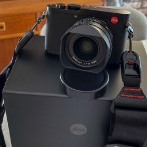What's wrong with a good old shutter speed dial?
-
Recently Browsing 0 members
- No registered users viewing this page.
-
Similar Content
-
- 13 replies
- 1,266 views
-
- 1 reply
- 285 views
-
- 1 reply
- 790 views
-
- 9 replies
- 1,479 views
-
- 8 replies
- 1,646 views
-




Recommended Posts
Join the conversation
You can post now and register later. If you have an account, sign in now to post with your account.
Note: Your post will require moderator approval before it will be visible.